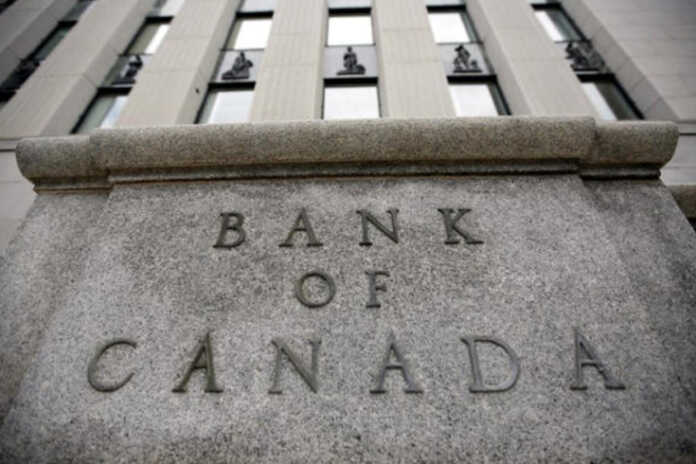Understanding How the Bank of Canada’s Recent Rate Cut Affects Jewellery Businesses in Canada
The Bank of Canada made a significant move by lowering its benchmark interest rate from 5% to 4.75%, marking the first rate cut in over four years. This decision, driven by a need to ease monetary policy amid falling inflation rates, has far-reaching implications for various sectors of the Canadian economy, including the jewellery industry. This article explores the impact of this rate cut on the Canadian jewellery market, highlighting key factors and potential outcomes for businesses and consumers alike.
Bank of Canada’s Rate Cut: A Brief Overview
The Bank of Canada reduced its key interest rate by 25 basis points to 4.75%, signaling increased confidence that inflation is moving closer to the 2% target. The central bank’s decision comes after Canada’s inflation rate dropped to 2.7% in April from 3.4% in December. Bank of Canada Governor Tiff Macklem expressed optimism about the progress made in combating inflation, though he cautioned that the bank will closely monitor economic indicators such as wage growth, corporate pricing behaviour, and supply and demand dynamics.
Implications for the Canadian Jewellery Industry
Lower Borrowing Costs
The reduction in interest rates directly impacts borrowing costs, making it cheaper for jewellery businesses to finance operations, expand inventories, and invest in new technologies. Lower interest rates reduce the cost of loans, which can encourage jewellery retailers and manufacturers to take on new projects and enhance their product offerings. This can lead to increased competitiveness and innovation within the industry.
Increased Consumer Spending
Lower interest rates generally boost consumer confidence and spending power. As borrowing costs decrease, consumers are more likely to take out loans for significant purchases, including luxury items like jewellery. With more disposable income and easier access to credit, Canadians may be more inclined to buy high-end jewellery pieces, thereby boosting sales for retailers.
Impact on Export Opportunities
The rate cut may also affect the Canadian dollar’s value, potentially making Canadian jewellery more attractive to international buyers. A weaker Canadian dollar can enhance the competitiveness of Canadian-made jewellery in global markets, leading to increased export opportunities. Jewellery businesses that focus on international sales could see a rise in demand for their products.
Real Estate and Retail Space
Lower interest rates often stimulate the real estate market, which can have a ripple effect on retail spaces. Jewellery businesses looking to expand or open new stores may find more favourable conditions for leasing or purchasing retail space. This can facilitate growth and expansion plans, allowing businesses to reach a broader customer base.
Wage Growth and Labour Market Dynamics
While the Bank of Canada remains cautious about wage growth outpacing productivity, the current economic environment could influence labour costs in the jewellery industry. Businesses may need to balance competitive wages with productivity enhancements to maintain profitability. The slower pace of employment growth compared to the working-age population suggests a competitive labour market, which could impact hiring strategies for jewellery businesses.
Potential Risks and Considerations
Inflationary Pressures
Governor Macklem cautioned that lowering interest rates too quickly could reverse the progress made in controlling inflation. Jewellery businesses need to stay vigilant about potential inflationary pressures that could affect raw material costs and retail prices. Keeping an eye on economic trends and adjusting pricing strategies accordingly will be crucial.
Global Geopolitical Tensions
Global geopolitical tensions remain a variable that could impact the jewellery industry. Supply chain disruptions, fluctuating commodity prices, and changes in international trade policies could all influence the availability and cost of materials used in jewellery manufacturing. Staying informed about global events and developing contingency plans will help businesses navigate these uncertainties.
Housing Market Fluctuations
The rate cut is likely to influence the Canadian housing market, potentially leading to increased housing prices. For the jewellery industry, this could mean a shift in consumer spending priorities. Jewellery businesses need to understand the housing market’s dynamics and how it might affect discretionary spending on luxury items.
In conclusion, the Bank of Canada’s recent interest rate cut to 4.75% signals a positive shift in the fight against inflation and presents numerous opportunities for the Canadian jewellery industry. Lower borrowing costs, increased consumer spending, and enhanced export opportunities are among the key benefits that jewellery businesses can leverage. However, it’s essential to remain cautious about potential risks such as inflationary pressures and global geopolitical tensions.
By staying informed and adaptable, Canadian jewellery businesses can navigate the evolving economic landscape and capitalize on the opportunities presented by the central bank’s monetary policy adjustments. As the industry moves forward, the focus should be on strategic investments, innovative product offerings, and maintaining a keen awareness of market dynamics to ensure sustained growth and success.
![]()









